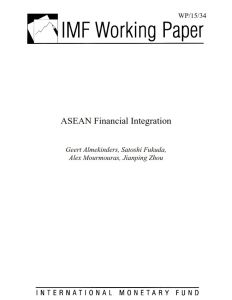Join getAbstract to access the summary!

Join getAbstract to access the summary!
Geert Almekinders, Satoshi Fukuda, Alex Mourmouras and Jianping Zhou
ASEAN Financial Integration
IMF, 2015
What's inside?
ASEAN has a long way to go to achieve financial integration, but it can learn a lot from Europe’s mistakes.
Recommendation
The 10 countries of the Association of Southeast Asian Nations (ASEAN) are close to creating the world’s newest economic power bloc – the ASEAN Economic Community (AEC). However, as economists Geert Almekinders, Satoshi Fukuda, Alex Mourmouras and Jianping Zhou point out, the AEC must plan and regulate on a transnational level to insulate itself from the kinds of shocks that shook the euro zone. With careful execution, financial integration will attract a surge of foreign investment and capital flows to the ASEAN region. However, as this lucid, structured and comprehensive analysis explains, various risks could imperil a project that shows huge promise. getAbstract recommends this study to investors, executives and policy makers with interests in the region.
Summary
About the Authors
Geert Almekinders, Alex Mourmouras and Jianping Zhou are economists with the International Monetary Fund. Satoshi Fukuda is in the graduate program at the University of California, Berkeley.


















Comment on this summary